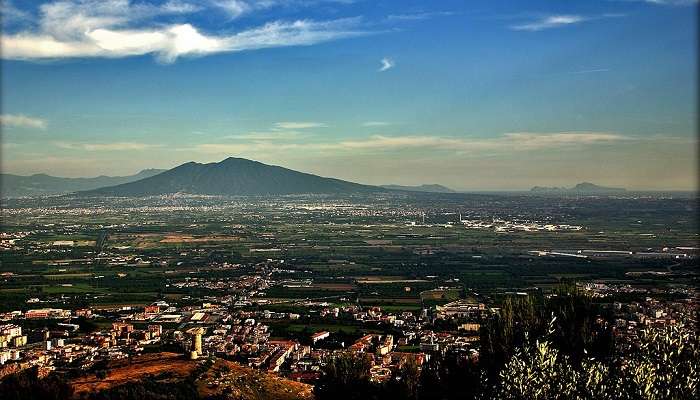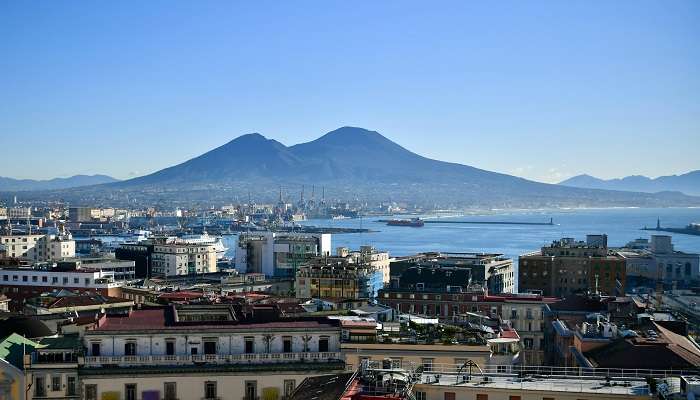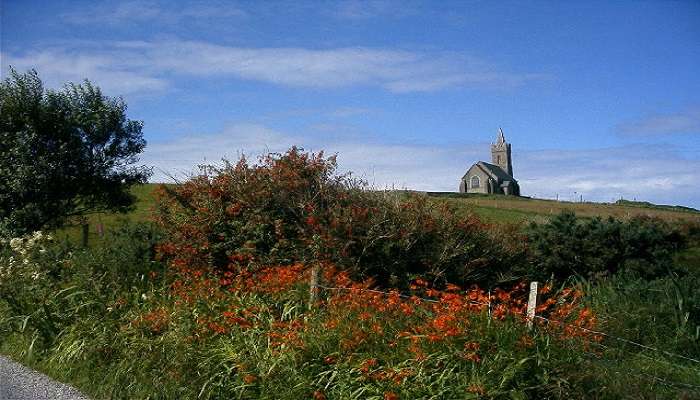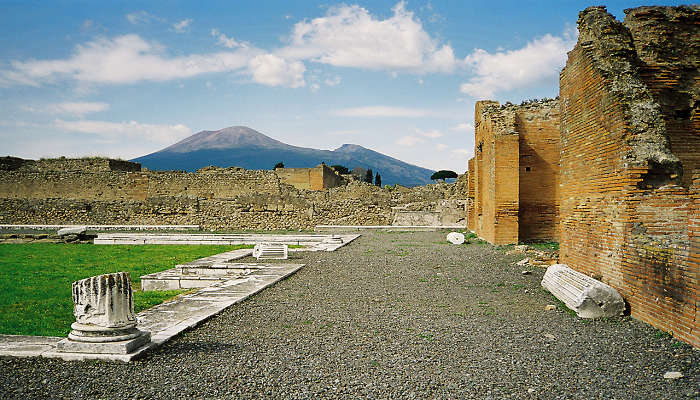Plan A Trip To The Majestic Mount Vesuvius In Naples In 2026

A visit to Mount Vesuvius is a journey through history and time. It bears testament to hundreds of years of history, with the earliest recorded eruptions occurring in 79 AD. This eruption buried the then-Roman cities of Pompeii and Herculaneum. This eruption is hailed as one of the most disastrous natural calamities, leaving cities buried under ash, pumice, and dust. Since then, between 1660-1944, eruptions have occurred during various intervals. These eruptions are mapped and timed, with some lasting as long as 6 months to 30 years. This shows that Mount Vesuvius is a wonder of nature and explains why many people want to witness it with their own eyes.
What Can Visitors Expect From Mount Vesuvius?
Well, visitors generally hike to the summit of the volcanic mountain to reach the highest part of the rim that borders around the tip of Mount Vesuvius. Because it is a tourist spot, the hiking trail is well maintained but has steep winding terrain that one can expect from a volcanic landscape. The most popular trail is the one that reaches the rim of the crater. The trail is roughly about 4 km to and fro and leads you to about 1170 metres above sea level.
Let us look at what draws visitors from all over to Mount Vesuvius-
1. Geography And Geology

Whether you’re a history buff or interested in geography, Mount Vesuvius will offer you the most exciting stories and adventures! Mount Vesuvius is believed to have been formed by the collision of the African and Eurasian tectonic plates. It is part of the Campanian volcanic arc, which comprises many other volcanoes.
Mount Vesuvius is the only active volcano; many others are known to be extinct as they have not erupted recently. Topographically, Mount Vesuvius consists of a large cone encircled by the rim of a summit, which was caused by the collapse of Mount Somma.
Also Read: Things To Do In Naples
2. History and Mythology

The Romans considered Mount Vesuvius a devotee of Hercules. At the same time, Greek mythology records that Vesuvius was worshipped as one of Jupiter’s powers, also known as Vesuvius Jupiter.
The eruption of AD 79 is known as one of the most infamous eruptions, and it is believed to have released 100,000 times the thermal energy of the Hiroshima-Nagasaki bomb blasts. This eruption destroyed the cities of Pompeii and Herculaneum, and their ruins were buried under layers of lava and ash, and hundreds of people.
3. Science

In the 18th century, as scientists, researchers, and geologists began showing interest in studying the various aspects of this volcano, a proper scientific study of Mount Vesuvius started.
An observatory, resting at 608 metres, was established in 1845. Later in the 20th century, numerous other stations were added and built at varying heights to study volcanic activities. Later, a deep tunnel and a laboratory were constructed to better study seismographic movements in the mountain.
Related Post: Pompeii Ruins
4. Local Flora

Owing to volcanic eruptions, the land around the volcano becomes very fertile after an eruption has settled down. The slopes of Mount Vesuvius and the surrounding areas are very fertile; some orchards and vineyards produce various fruits and wine.
Similarly, giant trees like oak and chestnut grow abundantly. Although vegetation dies during eruptions, it proliferates abundantly during volcanic inactivity.
5. The View From The Top

Visitors who make it to the top experience a feeling of triumph over scaling the mountain. The view is unmatched, and nothing on earth can parallel hiking to the topmost point of an active volcano and peering down into the caldera of smouldering lava.
Apart from the feeling of scaling one of the most dangerous active volcanoes on the Earth, the scenic view remains unmatched, with the most panoramic view of Naples, the sprawling vineyards and the gorgeous coastline. If you are lucky enough, you can also see distant islands like Capri and Ischia, which greatly enhance the overall experience of this unforgettable trip to the mountain.
Related Post: Napels Museums
Additional Information to Know

How to reach: You can reach Mount Vesuvius by car or by bus. You can generally reach Mount Vesuvius from either Pompeii or Herculaneum.
Timings:
- 9:00 AM – 3:00 PM – (January, February, November and December)
- 9:00 AM – 4:00 PM (March and October)
- 9:00 AM – 5:00 PM (April, May, June, September)
- 9:00 AM – 6:00 PM (July and August)
Opening hours: 9:00 AM
Entry fee: The standard fee is 10 Euros for adults, 8 Euros for Students, and Free entry for children and Disabled people.
Nearest Bus: EAV buses are available from Pompeii to Mount Vesuvius every 50 minutes.
You May Also Like To Read: Naples Castles
A trip to Italy is incomplete without a trip to Mount Vesuvius – it has history, legacy and adventure. Whether you are a history buff seeking to relive the ancient history of thousands of years or love adventure and outdoors, whether geography fascinates you, or you are a lover of all things Greek and Roman- Mount Vesuvius definitely should be on your list. What better way to experience everything at once- hiking to the top of an active volcano that has been around for thousands of years and has witnessed civilisations and empires rising and falling?It is a remarkable wonder of nature that should not be missed while in Italy. It will be a lifetime trip, and the memories will be worth every second! So why wait? Book your trip to Italy and create a lifetime of beautiful memories.
For our editorial codes of conduct and copyright disclaimer, please click here.
Cover Image Credit: Kris de Curtis for Wikimedia Commons
Frequently Asked Questions About Mount Vesuvius
How to reach Mount Vesuvius by Car?
If you are taking a car, the best route would be to take the A3 Napoli-Salerno Highway towards Torre del Greco or the Herculaneum exit while following the signs for Vesuvio. You will find a parking lot, and after parking there, you will find shuttle services that take you directly to the ticket office.
What is the best public transport route to reach Mount Vesuvius?
A bus or a shuttle will take you to Mount Vesuvius for about 22 Euros for a round trip, including entry to the Mount Vesuvius National Park. If you opt for public transport, you can opt for a bus or a shuttle from the Pompeii Villa dei Misteri stop or the Ercolano Savi Stop. Alternatively, plenty of EAV bus routes are plying between Pompeii and Mount Vesuvius every hour.
Is Mount Vesuvius open for visitors on all days and around the year?
Mount Vesuvius is open for visitors on all days, including holidays and Sundays. It remains open throughout the year, except in special cases of bad weather warnings or other unforeseen circumstances.
What would be the best time to visit Mount Vesuvius?
Although the park is open for visitors at all times throughout the year, the best time to visit Mount Vesuvius is during the spring season when the weather is pleasant and the hike is bearable. Peak summers mean a more difficult and strenuous climb to the top. Another good time would be autumn when the weather is milder.
Do you need a guide for scaling Mount Vesuvius?
Hiring a guide isn't mandatory for the trio; however, you can consider joining a guided tour, as they ensure a smooth hike along with other benefits like historical and geographical insights, interesting facts, local lore, etc., which would enhance your overall experience of the trip.
People Also Read:
Mountains In Brazil Mountains In Scotland Mountains In Sri Lanka

With a passion for exploring and travelling to the roads long forgotten, experience the world through enthralling stories and adventures. Join me as I share my experiences at some of the world’s most popular tourist destinations and quench that pestering curiosity with something exciting!











